Tibet Facts: Learn These 10 Amazing Facts about Tibet
Tibet is a remote and mysterious region full of natural wonders and home to an ancient culture. Traveling there is a chance to experience ways of life that uniquely adapted to the local geography, climate, and history. Before your trip, learn more about this fascinating place with these 10 amazing facts about Tibet.
1. The name Tibet is derived from the Sanskrit word Trivistapa, meaning "heaven."
Tibet’s name is a connection to the deep spirituality of the region. The name originates from the Sanskrit word ‘Trivistapa’ which translates to “heaven” or “the abode of the gods” in English. Sanskrit is a classical language used in the historical texts of Buddhism, Hinduism, and Jainism. Tibet is deeply connected to these beliefs with places like Mount Kailash believed to be the home of deities.
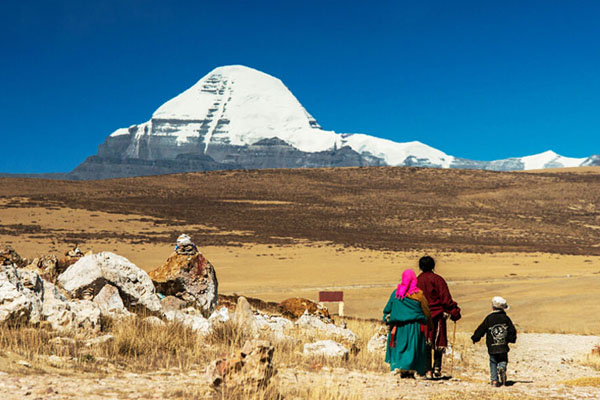 Mount Kailash is believed to be the home of deities.
Mount Kailash is believed to be the home of deities.2. Tibet boasts an average elevation of over 4,000 meters.
The high altitude Tibetan Plateau is called ‘the roof of the world’. Filled with soaring mountain ranges, the region has an average elevation of 4,000 meters. The Himalayas in the south are home to nine of the ten highest mountains in the world including Mount Everest. The altitude creates a unique climate with cooler temperatures and low oxygen levels.
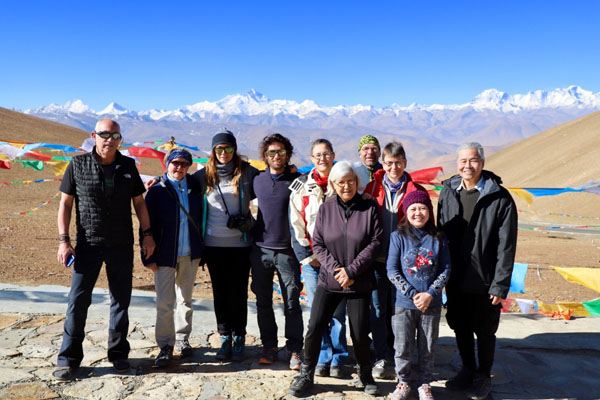 View Himalayan range at Gawula Pass
View Himalayan range at Gawula Pass3. There are over 7,000 monasteries scattered across Tibet.
Tibet is a deeply spiritual place where over 90% of the population follow Tibetan Buddhism. The region is dotted with over 7,000 monasteries, some dating back to the 8th century.
The provincial capital, Lhasa, is home to several famous monasteries such as Potala Palace, Jokhang Sera Monastery with its monks’ debates, and Drepung Monastery. There is a even a monastery on Mount Everest. At 5,009 meters, Rongbuk Monastery is the highest in the world, and home to a guesthouse where visitors to the famous mountain can stay.
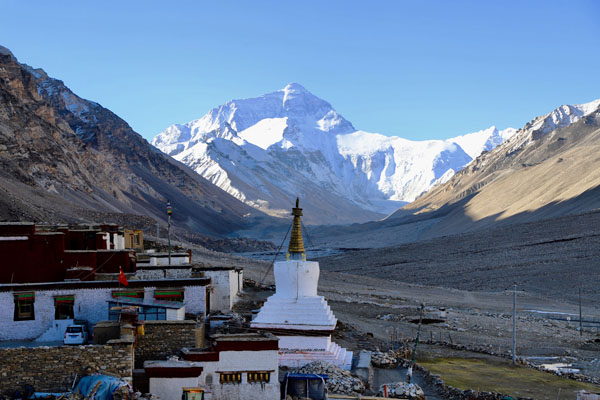 Rongbuk Monastery is the highest monastery in the world.
Rongbuk Monastery is the highest monastery in the world.4. Tibet is suitable for visits year-round.
Despite being thought of as a cold place that you might want to avoid in winter, Tibet can be visited all year round. Spring and autumn, April-May and September-October, are the best times to visit. The weather is warmer, and skies are clear for great mountain views.
Summer, July-August, is the monsoon season. The rain can bring fog limiting visibility, but the temperatures are at their warmest. It’s the peak season for domestic travelers, and the time for lush vegetation.
Winter is cold, but the best time for budget travel. You can find great deals on flights, accommodations, tours and meals during the low season. The snow-covered winter landscapes are breathtaking.
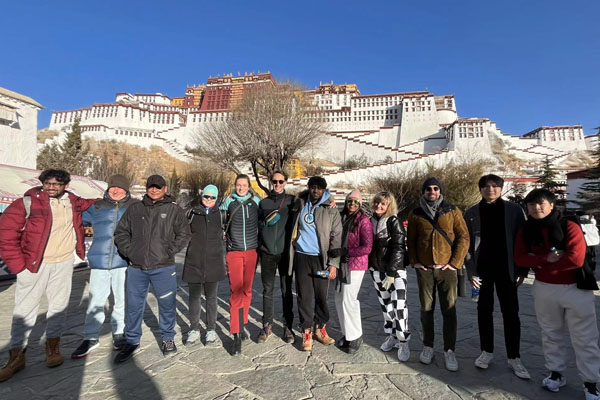 Visit Lhasa in winter
Visit Lhasa in winter5. Tibet follows its unique Tibetan Lunar Calendar.
Tibet continues to follow its traditional Lunar Calendar. Based on the moon’s phases, it has 12 or 13 lunar months, each beginning and ending with a new moon. The Tibetan Lunar Calendar sets the schedule for festivals like Losar and Saga Dawa, and is used to determining auspicious dates for ceremonies and personal events like weddings.
6. There are five airports in Tibet, excluding the one in Lhasa.
In addition to Lhasa Gonggar Airport, there are five other airports in Tibet. Four of them serving tourists. Lhasa Gonggar Airport is the only airport in the region with international flights to Kathmandu, the other airport are for domestic travel.
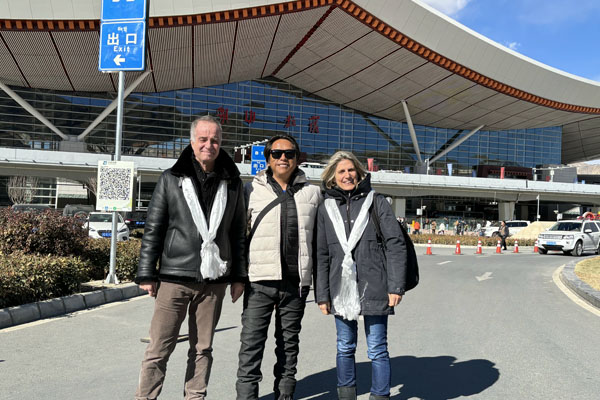 Our guide greets visitors at Gongga Airport in Lhasa.
Our guide greets visitors at Gongga Airport in Lhasa.Nyingchi Manling Airport is near Bayi town and has routes covering the southeastern part of Tibet. Shigatse Peace Airport is an important access point to cultural sites in Tibet’s second largest city like Tashilhunpo Monastery. Ali Kunsha Airport in Ngari serves the remote region that includes Mount Kailash and Lake Manasarovar. Qamdo Bamda Airport in the eastern Qamdo Prefecture has one of the longest paved runways in the world to allow for planes to operate in the high-altitude environment.
7. Tibet features a high-speed railway network.
Tibet has an expanding high-speed railway network that will eventually connect it to the high-speed rail in Mainland China, and Nepal. Bullet trains currently link Lhasa, Shigatse, and Nyingchi and have transformed local travel by reducing travel times.
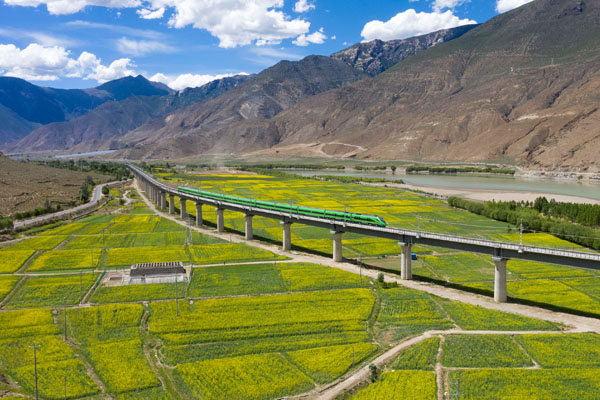 Lhasa to Nyingchi High-speed train
Lhasa to Nyingchi High-speed trainThe high-speed trains, and the Tibet train via Qinghai-Tibet Railway provide a comfortable vantage point for viewing the region’s natural wonders. Trains let visitors travel safely with systems to help avoid altitude sickness.
8. Tibet is characterized by deserts, valleys, and even forests, in addition to its mountains and lakes.
The most famous natural features of Tibet are its mountains and lakes. Places like Mount Everest, Mount Kailash, Lake Yamdrok, and Lake Manasarovar attract thousands of tourists and pilgrims each year to witness their natural beauty. However, the landscape is so much more diverse.
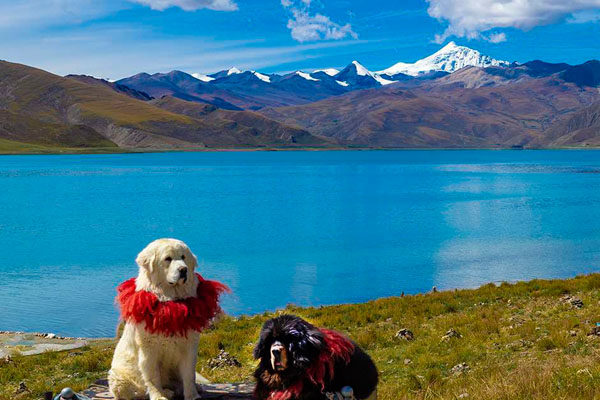 Yamdrok Lake in Tibet
Yamdrok Lake in TibetGyirong Valley has been called the most beautiful valley in the world, and is covered in dense forests and serene Sherpa villages. Nyingchi is renowned for the lush valleys and gorges carved through the landscape by river like the Yarlung Tsangpo. There are even high-altitude deserts in the Qiadam Basin where you can see vast salt flats and sand dunes.
9. Summer marks the festival season in Tibet.
The weather may be better in spring and autumn, but summer is a great time in Tibet to join in local festivals. You can see impressive displays of horsemanship in the horse racing festival in Gyantse. The Shoton festival is a celebration of local culture with cultural performances and delicious food. Ganden Monastery has a Thangka unveiling festival that displays a large scroll painting with a scene from Buddhist scriptures.
10. Buddhism serves as the cornerstone of Tibet’s culture and daily life.
Tibetan Buddhism is the foundation of local culture and daily life. It has been practiced in Tibet since the 7th century and has profoundly influenced local beliefs and values. Monasteries, rituals, and meditation are a daily presence. In Lhasa, pilgrims can always been seen making the kora around Jokhang temple, and daily religious practices are a part of life.
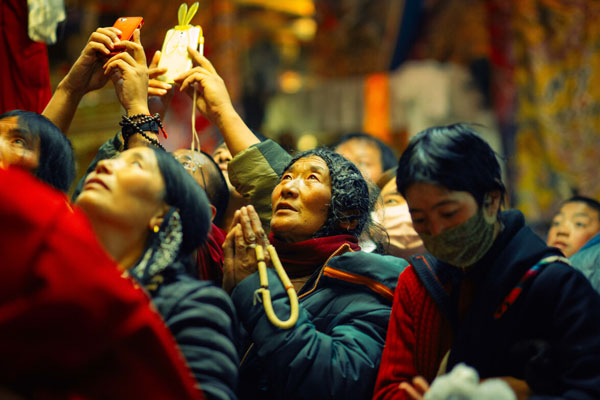 Devout Tibetan pilgrims in the temple
Devout Tibetan pilgrims in the templeConclusion
The best way to learn about Tibet is spending time there. Visiting cultural landmarks and interacting with local Tibetans will let you experience the deep cultural roots that influence all aspects of life. Contact us for more information on how you can start planning your Tibet tour.
 BACK
BACK




0 Comment ON "Tibet Facts: Learn These 10 Amazing Facts about Tibet"